- Get link
- X
- Other Apps
Pav bhaji is an iconic dish from Mumbai and hugely popular all over India as a street food. It originated in Mumbai as a quick lunch option for textile mill workers.
Gradually this dish becomes so popular that now it is served as street food as well as in restaurants in Mumbai and the rest of India.
In Hindi and Marathi languages, the word “Pav” is for bread rolls. “Bhaji” means vegetables or a vegetable based dish (dry or gravy) in the Marathi language. Since both the bhaji (vegetable gravy) and pav (dinner rolls) are served together, hence the name ‘Pav Bhaji‘.
https://www.vegrecipesofindia.com/pav-bhaji-recipe-mumbai-pav-bhaji-a-fastfood-recipe-from-mumbai/#h-what-is-pav-bhaji
Ingredients :
- 2 tablespoons, Cumin seeds
- 1 tablespoon, Fennel seeds
- 2 tablespoons, Coriander seeds
- 2 teaspoons, Black peppercorns
- 4 Cinnamon sticks of 1 inch each
- 7 - 8 Dried Kashmiri Chilies or 2 tablespoons Kashmiri Red Chilli Powder
- 2 Black cardamoms
- 13 - 15 Cloves
- 1 Bay leaf
- Star Anise
- ½ teaspoon, Turmeric Powder
- 2 teaspoon, Dry Ginger Powder (Sonth)
- 1 tablespoon, Dry Mango Powder (Amchur)
- ½ teaspoon, Black salt
- ½ teaspoon, Regular or Pink Salt
Recipe for Pav Bhaji:
Step-1:
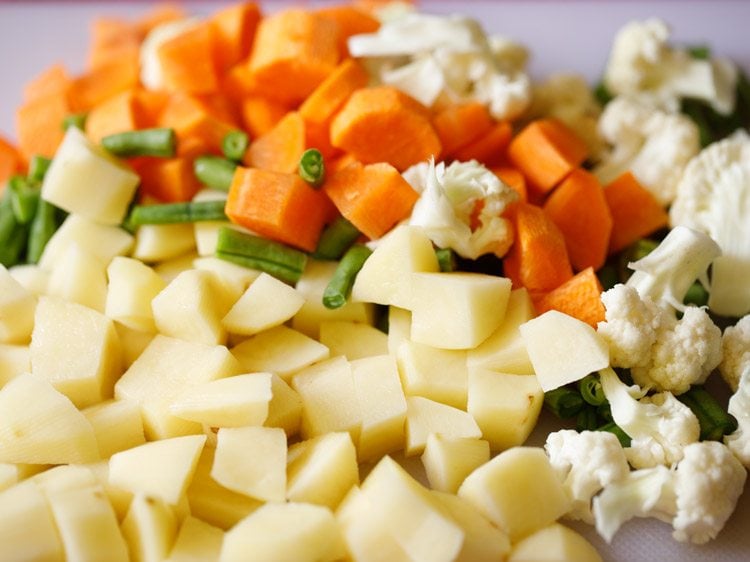 |
| https://www.vegrecipesofindia.com/ |
Rinse, peel and chop the veggies. You will need 1 cup chopped cauliflower, 1 cup chopped carrot, 3 medium sized potatoes (chopped) and ⅓ cup chopped french beans.
Cabbage, broccoli, zucchini, pumpkin are some unique options that you can consider to add, but the traditional version does not include these veggies.
Step-2:
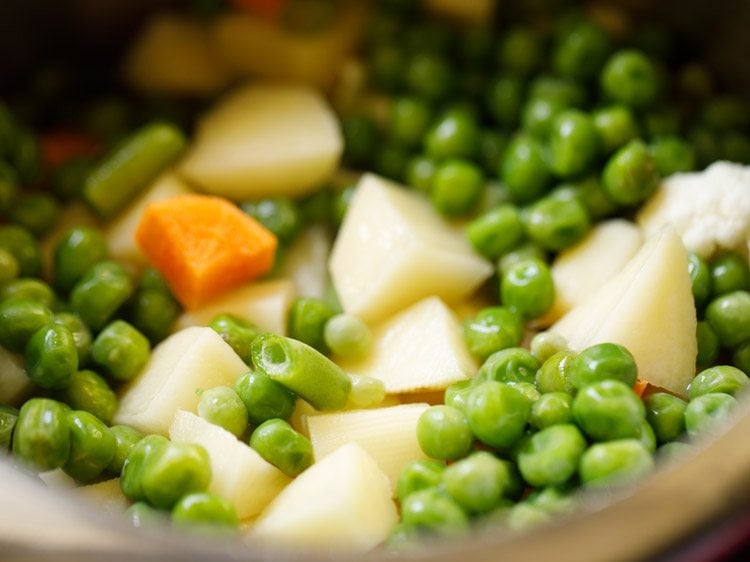 |
| https://www.vegrecipesofindia.com/ |
Add all the above chopped veggies in a 3 litre pressure cooker. Also add 1 cup green peas (fresh or frozen).
I cook the veggies in a pressure cooker. You can boil or steam them using a pan or in the Instant pot.
Step-3:
Add 2.25 to 2.5 cups water.
Step-4:
Pressure cook the veggies for 5 to 6 whistles or for about 12 minutes on medium heat.
Step-5:
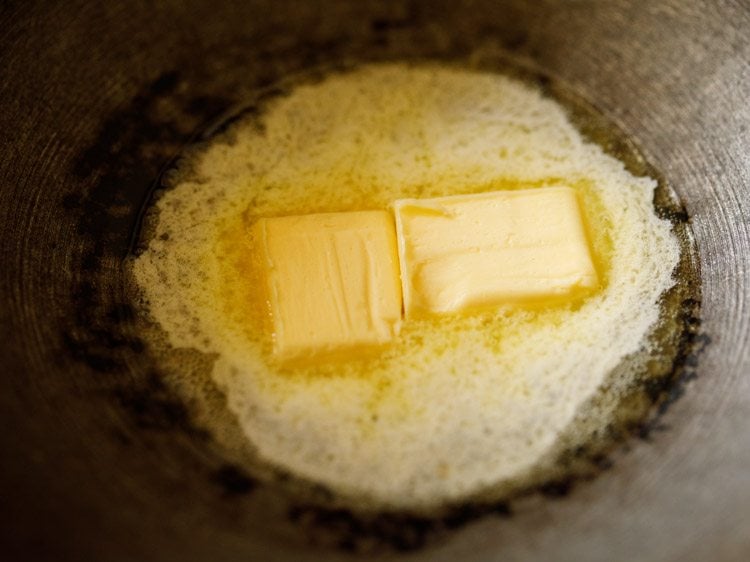 |
| https://www.vegrecipesofindia.com/ |
Heat a frying pan or kadai (wok). You can also use a large tawa or a skillet. Add 2 to 3 tablespoons butter. You can use amul butter or any brand of butter. The butter can be salted or unsalted.
Step-6:
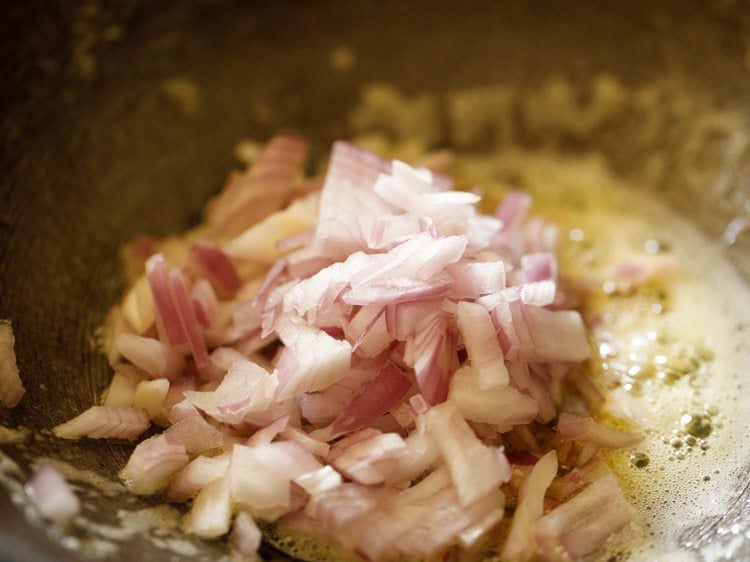 |
| https://www.vegrecipesofindia.com/ |
As soon as the butter melts, add 1 teaspoon cumin seeds
Let the cumin seeds crackle and change their color.
Then add ½ cup chopped onions.
Step-7:
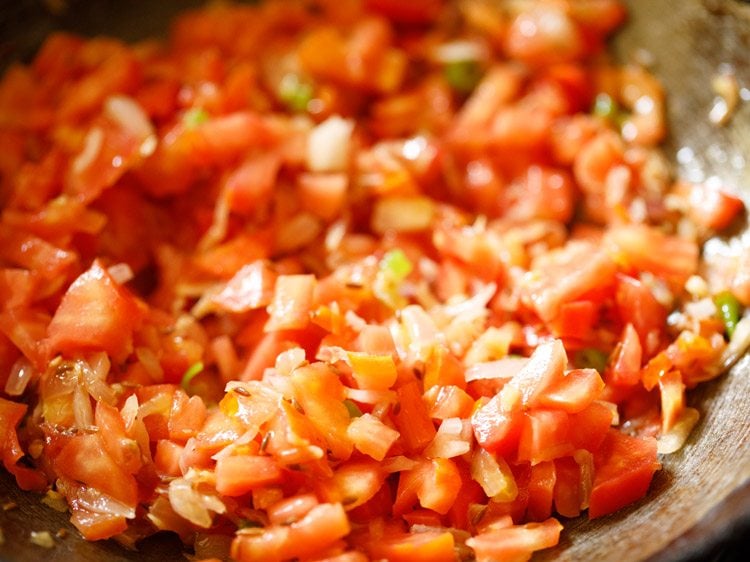 |
| https://www.vegrecipesofindia.com/ |
Add 2 teaspoons ginger-garlic paste. You can crush 1.5 inch ginger and 5 to 6 medium garlic cloves, in a mortar-pestle.
Add 2-3 green chillies and Add 2 cups finely chopped tomatoes. Swap canned tomatoes if you do not have fresh tomatoes
Step-8:
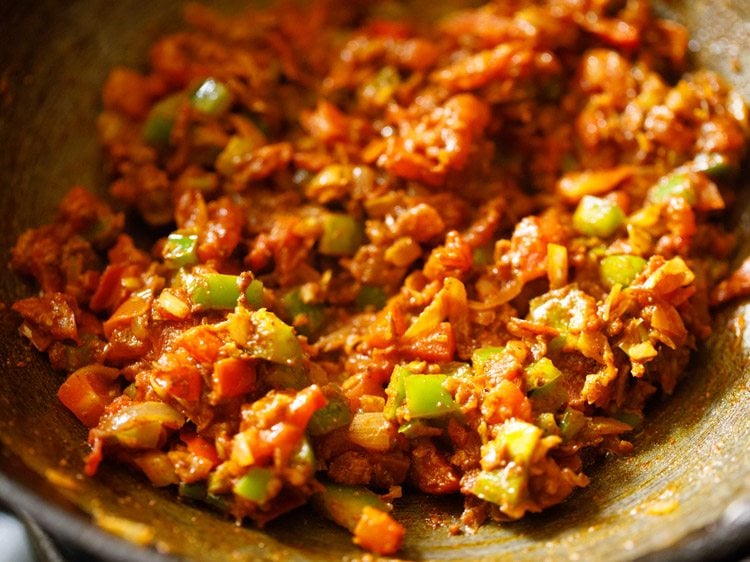 |
| https://www.vegrecipesofindia.com/ |
When the tomatoes have softened, add ½ cup finely chopped capsicum (green bell pepper). Sauté for 2 to 3 minutes.
Add 1 teaspoon turmeric powder and 1 teaspoon Kashmiri red chilli powder and your Pav Bhaju Masala
Mix it properly
Step-9:
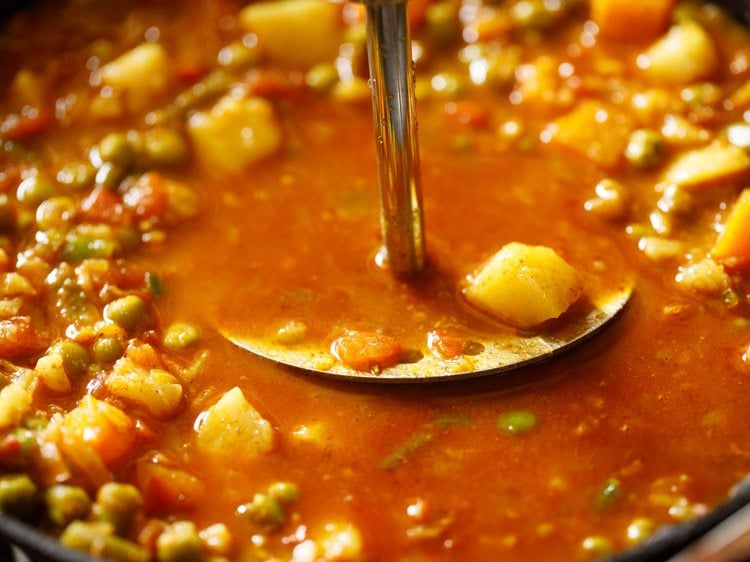 |
| https://www.vegrecipesofindia.com/ |
Add the cooked veggies. You can choose to mash the veggies before you add them in the pan or skillet.
Add all of the stock or water from the pressure cooker in which the veggies were cooked.
With a potato masher, begin to carefully mash the veggies directly in the pan.
Step-10:
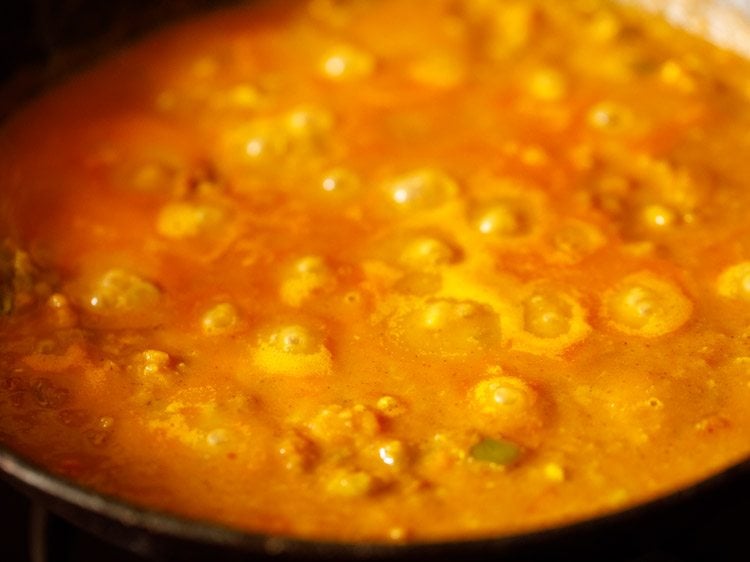 |
| https://www.vegrecipesofindia.com/ |
If the bhaji looks dry and then add some water. The consistency is neither very thick nor thin.
Step-11:
After this toast the pav/buns in butter and server our Bhaji with pav and some onion salads.
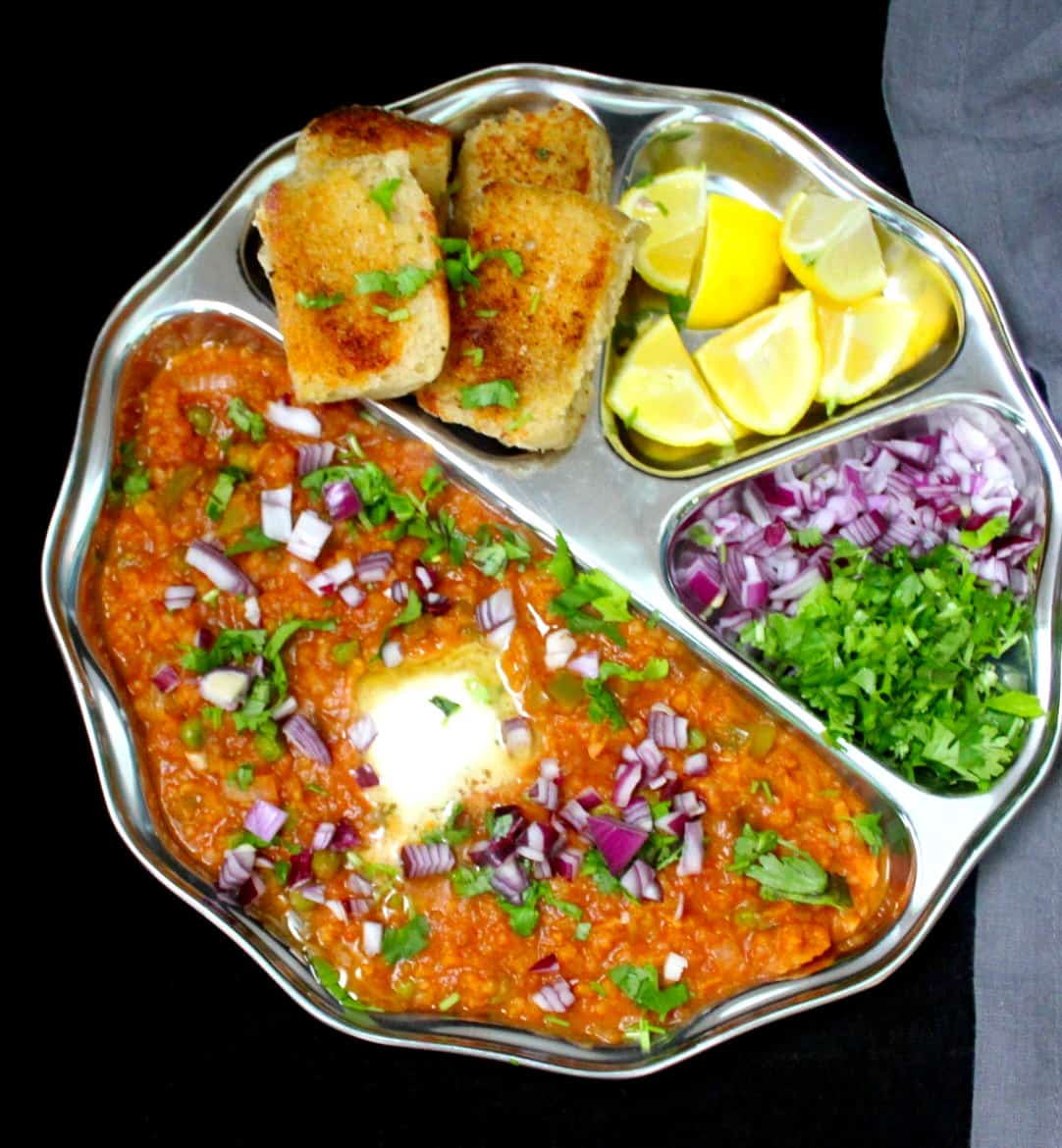 |
| https://holycowvegan.net |
Happy Cooking 😋
Share it with Love 💖
By: Ayush Jain
Comments

Awesome👏👏
ReplyDeleteVery Nice... Pavbhaji is my favorite��
ReplyDeleteVery nice blog 👌 ❤
Delete